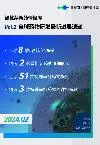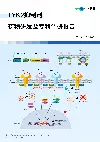Nanoscope Claims Phase II Win for Gene Therapy After Changing Primary Endpoint
2024-03-27
临床结果临床2期上市批准基因疗法临床3期
Pictured: Illustration of a gene therapy showing a syringe injecting a treatment into a DNA strand/iStock, Ilya Lukichev
Nanoscope Therapeutics claimed a hit on the changed primary endpoint of its Phase IIb vision loss gene therapy trial Tuesday, as the biotech looks to FDA approval of the candidate this year.
The study compared two doses of MCO-010, a mutation-agnostic gene therapy, to a sham control in 27 people with retinitis pigmentosa. The chronic genetic eye disease is characterized by degeneration of the retina. Spark Therapeutics, part of Roche, won FDA approval for Luxturna (voretigene neparvovec) in the condition in 2017 but the authorization only covers patients with mutations in the RPE65 gene.
Nanoscope designed MCO-010 to improve the vision of all patients with retinitis pigmentosa, regardless of the genetic basis of their condition. The gene therapy consists of an adeno-associated virus vector that delivers multi-characteristic opsins to re-enable retinal bipolar cells to detect light.
Last year, an investigator in the clinical trial said the study did not meet its primary endpoint, which, at that time, was assessing the efficacy of MCO-010 using the multi luminance y- mobility test at 52 weeks. Spark tracked the change in multi-luminance mobility test scores over 52 weeks to show the efficacy of Luxturna. The test measures changes in functional vision, as assessed by the ability of a subject to navigate a course accurately and at a reasonable pace at different levels of light.
Nanoscope changed the primary endpoint of its Phase IIb trial in January 2024 and released a statement about its talks with regulatory agencies the next week. According to Nanoscope, the FDA said the change from baseline in a measure of visual acuity in low vision patients could be an appropriate primary efficacy endpoint to support a filing for approval.
Tuesday, Nanoscope presented data on the change in best-corrected visual acuity (BCVA) at week 52. The Phase IIb study linked both doses of the gene therapy to statistically significant improvements in BCVA, a vision test, causing the trial to hit its new primary endpoint.
Nanoscope changed the primary endpoint after publishing 52-week results on the original measure of efficacy, although the biotech said it finalized and submitted a revised statistical analysis plan before the completion of week 76. The low dose failed to beat control on BCVA at week 76 but the high dose was significantly better than the sham treatment.
The biotech tracked reductions in logMAR from baseline of 0.539 and 0.374, respectively, in the high and low dose arms after 76 weeks. Nanoscope said in January that the Icelandic Medicines Agency endorsed a 0.3 logMAR change as being clinically meaningful for patients with severe vision loss. The biotech is now preparing to FDA approval in the second half of 2024.
Nick Paul Taylor is a freelance pharmaceutical and biotech writer based in London. He can be reached on LinkedIn.
更多内容,请访问原始网站
文中所述内容并不反映新药情报库及其所属公司任何意见及观点,如有版权侵扰或错误之处,请及时联系我们,我们会在24小时内配合处理。
靶点
立即开始免费试用!
智慧芽新药情报库是智慧芽专为生命科学人士构建的基于AI的创新药情报平台,助您全方位提升您的研发与决策效率。
立即开始数据试用!
智慧芽新药库数据也通过智慧芽数据服务平台,以API或者数据包形式对外开放,助您更加充分利用智慧芽新药情报信息。





